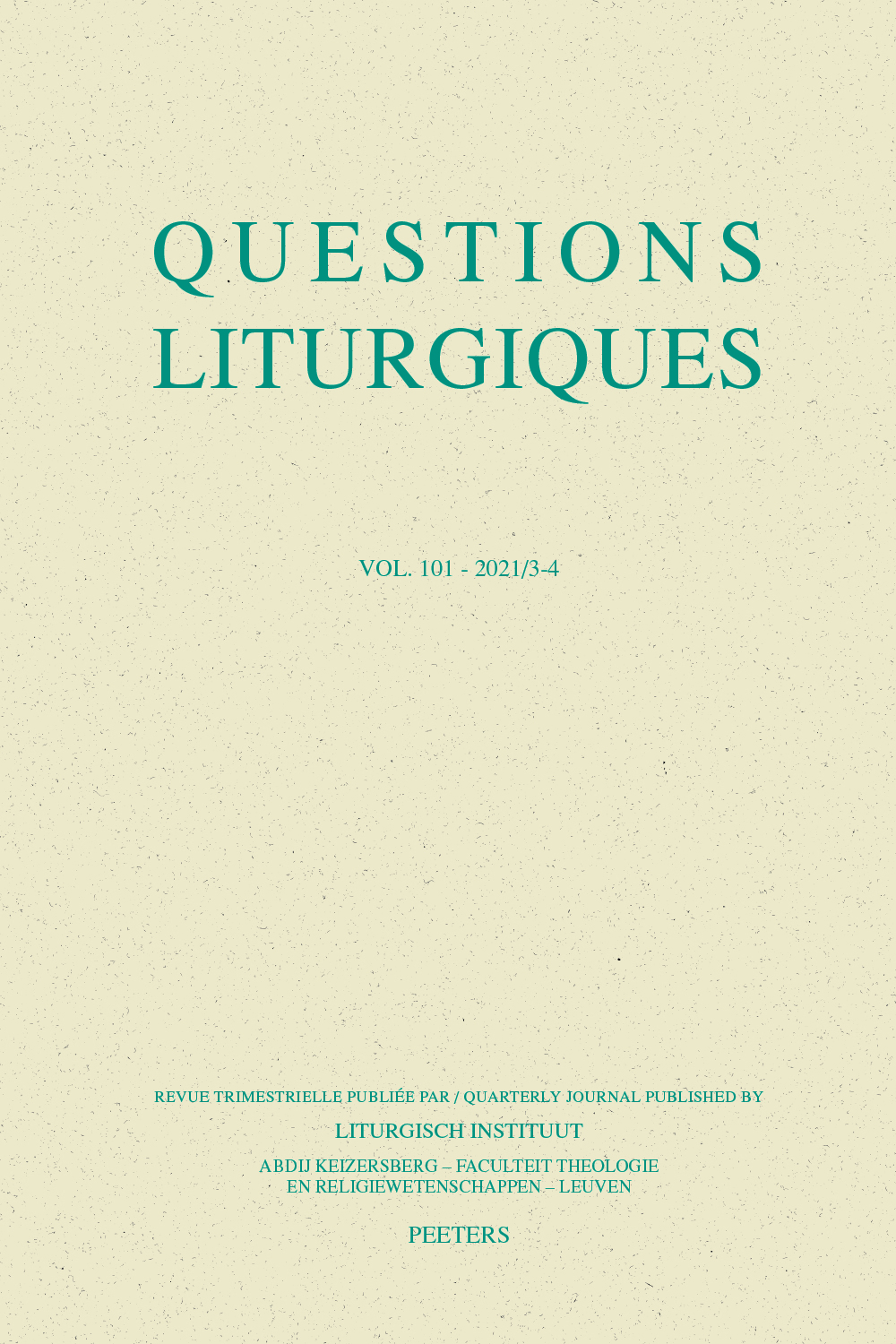 previous article in this issue previous article in this issue | next article in this issue  |

Preview first page |
Document Details : Title: Doctrines as 'Narrative-Linguistic Icons' Subtitle: Newman, the Creed, and the Liturgy Author(s): CIMORELLI, Christopher Journal: Questions Liturgiques/Studies in Liturgy Volume: 96 Issue: 1-2 Date: 2015 Pages: 20-40 DOI: 10.2143/QL.96.1.3092400 Abstract : In this article, I argue for a more narrative, relational conception of doctrine in the Roman Catholic Church. In this vein, I primarily utilize the insights of John Henry Newman regarding doctrinal development. In particular, I focus on Newman’s connection of development with the creed(s) of the church. The struggles of the early church played a significant role in the emergence of creedal formulas, which Newman believed provide an 'outline' of the Christian faith, within which all subsequent doctrinal development occurs. In light of this view, I then argue that doctrines, as bound to the outline of the creed(s), may be conceived as 'narrative-linguistic icons', which both signify divine truth and lead one to the history of the church. Finally, I attempt to articulate a clear connection between (i) the view of development outlined previously and (ii) the liturgy. The liturgy is the primary, concrete locus where contemporary Roman Catholics recite, and participate in, the creedal formulae, specifically between the proclamation of the word of God and the reception of the holy Eucharist. There is thus an eschatological dimension to the creed(s), a dimension which helps to shed light on the nature of doctrines that exist and develop historically within the outline of faith, precisely as a result of the participation of present believers in the Christian narrative of redemption. Dans cet article je plaide pour une conception de la doctrine plus narrative, relationnelle dans l’Église romaine catholique. Dans cette disposition j’utilise en premier lieu les vues de John Henry Newman concernant le développement doctrinal. En particulier, je mets au point la connexion du développement de Newman avec le(s) credo(s) de l’Église. Les débats de l’Église primitive jouent un rôle significatif dans l’émergence des formules de profession de foi que Newman aime utiliser comme «ébauche» de la foi chrétienne, dans laquelle tout le développement doctrinal subséquent est contenu. Dans cette perspective j’argumente que les doctrines, dans leurs relations avec les credo(s), peuvent être considérées comme des «icônes narratives-linguistiques», qui signifient à la fois la vérité divine et introduisent à l’histoire de l’Église. Finalement je tente d’articuler une claire connexion entre (1) la vue du développement présentée ci-dessus et (2) la liturgie. La liturgie est le premier lieu concret où les catholiques romains contemporains récitent, et participent en des formules de foi, notamment entre la proclamation de la parole de Dieu et la réception de la sainte Eucharistie. Les credo(s) possèdent donc une dimension eschatologique qui aide à éclairer la nature des doctrines qui existent et se développent historiquement à l’intérieur de cette «ébauche» de la foi: voilà le résultat de la participation des croyants présents dans la narration chrétienne de la rédemption. |
|


